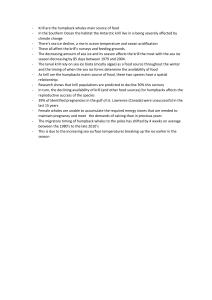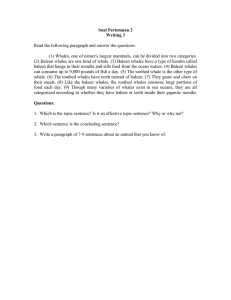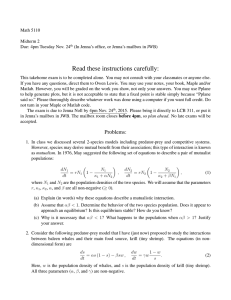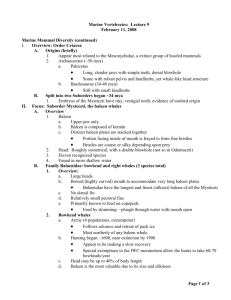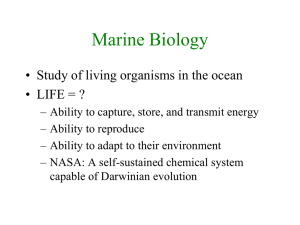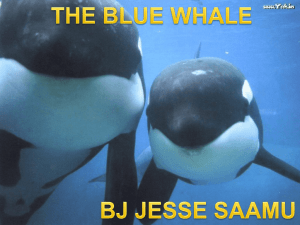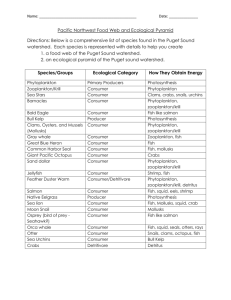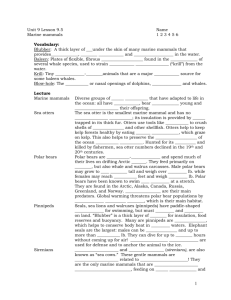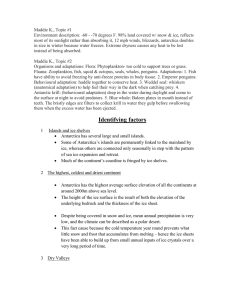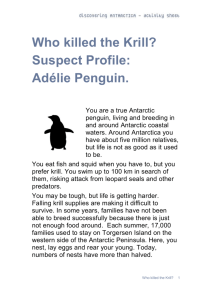Vocabulary
advertisement
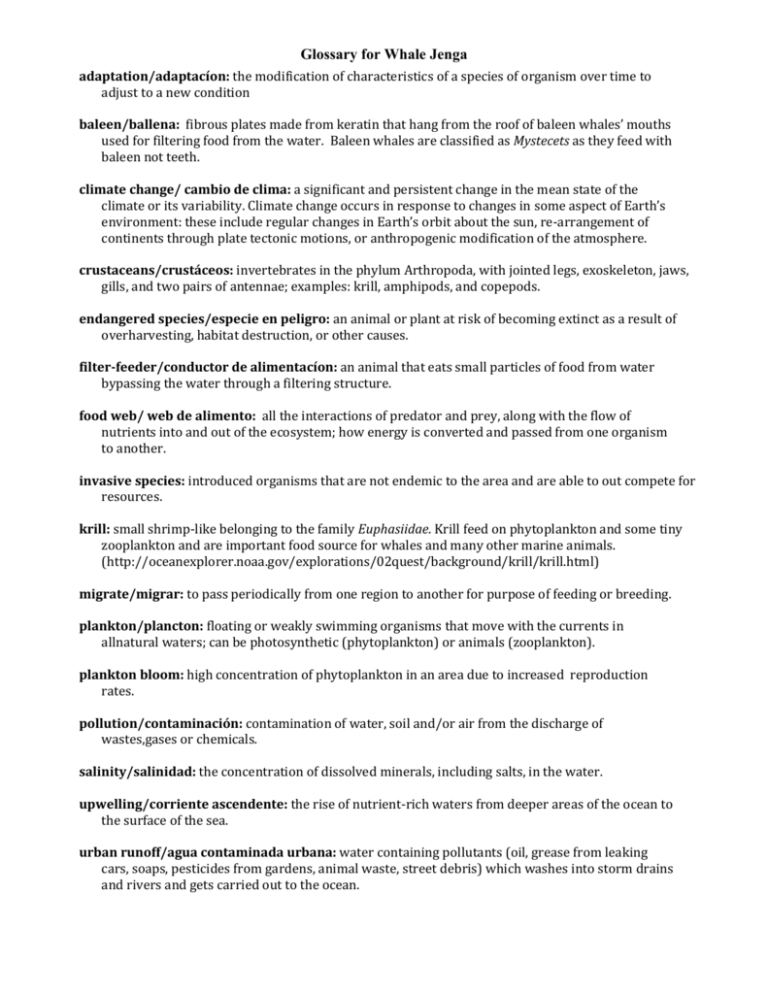
Glossary for Whale Jenga adaptation/adaptacíon: the modification of characteristics of a species of organism over time to adjust to a new condition baleen/ballena: fibrous plates made from keratin that hang from the roof of baleen whales’ mouths used for filtering food from the water. Baleen whales are classified as Mystecets as they feed with baleen not teeth. climate change/ cambio de clima: a significant and persistent change in the mean state of the climate or its variability. Climate change occurs in response to changes in some aspect of Earth’s environment: these include regular changes in Earth’s orbit about the sun, re-arrangement of continents through plate tectonic motions, or anthropogenic modification of the atmosphere. crustaceans/crustáceos: invertebrates in the phylum Arthropoda, with jointed legs, exoskeleton, jaws, gills, and two pairs of antennae; examples: krill, amphipods, and copepods. endangered species/especie en peligro: an animal or plant at risk of becoming extinct as a result of overharvesting, habitat destruction, or other causes. filter-feeder/conductor de alimentacíon: an animal that eats small particles of food from water bypassing the water through a filtering structure. food web/ web de alimento: all the interactions of predator and prey, along with the flow of nutrients into and out of the ecosystem; how energy is converted and passed from one organism to another. invasive species: introduced organisms that are not endemic to the area and are able to out compete for resources. krill: small shrimp-like belonging to the family Euphasiidae. Krill feed on phytoplankton and some tiny zooplankton and are important food source for whales and many other marine animals. (http://oceanexplorer.noaa.gov/explorations/02quest/background/krill/krill.html) migrate/migrar: to pass periodically from one region to another for purpose of feeding or breeding. plankton/plancton: floating or weakly swimming organisms that move with the currents in allnatural waters; can be photosynthetic (phytoplankton) or animals (zooplankton). plankton bloom: high concentration of phytoplankton in an area due to increased reproduction rates. pollution/contaminación: contamination of water, soil and/or air from the discharge of wastes,gases or chemicals. salinity/salinidad: the concentration of dissolved minerals, including salts, in the water. upwelling/corriente ascendente: the rise of nutrient-rich waters from deeper areas of the ocean to the surface of the sea. urban runoff/agua contaminada urbana: water containing pollutants (oil, grease from leaking cars, soaps, pesticides from gardens, animal waste, street debris) which washes into storm drains and rivers and gets carried out to the ocean.
